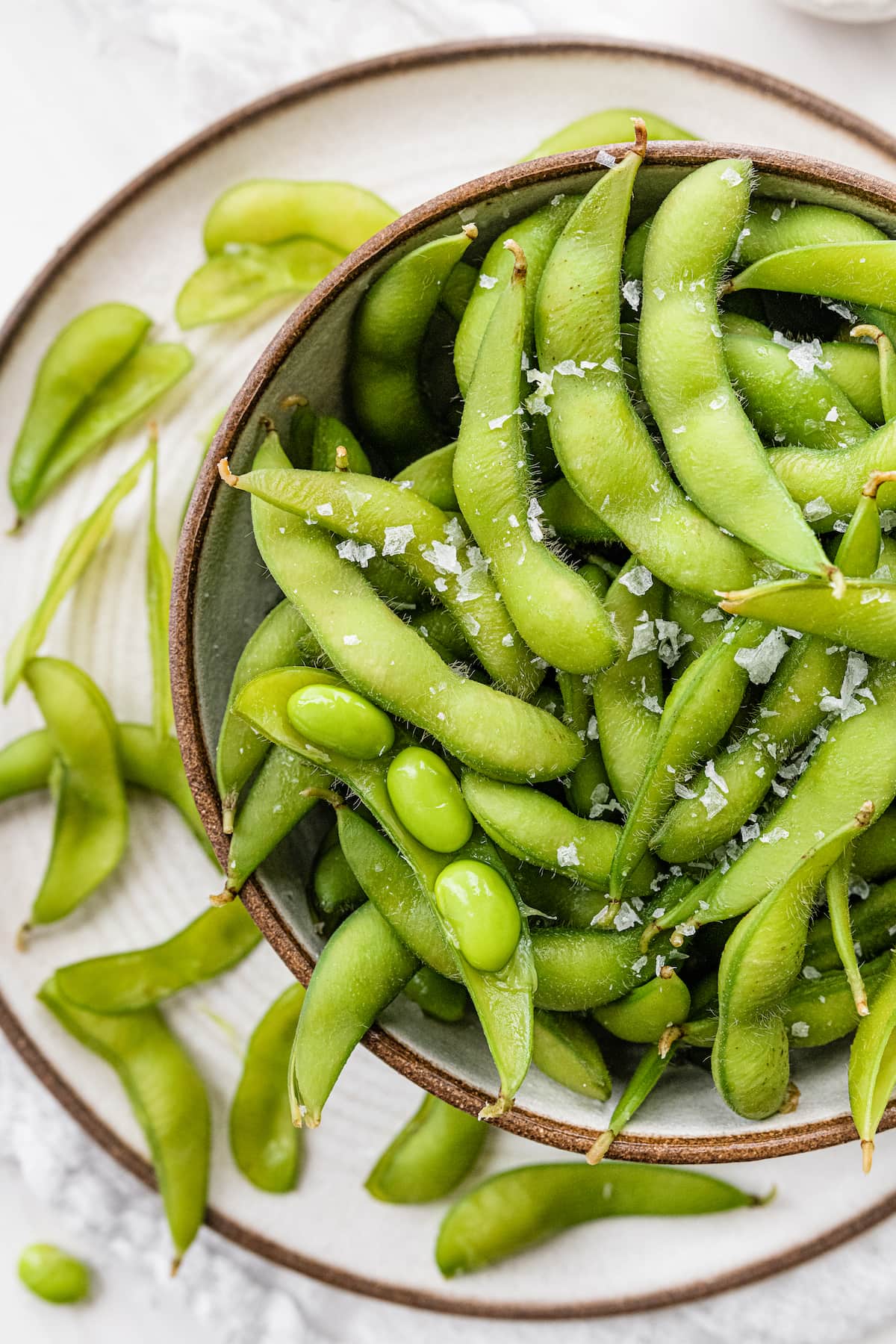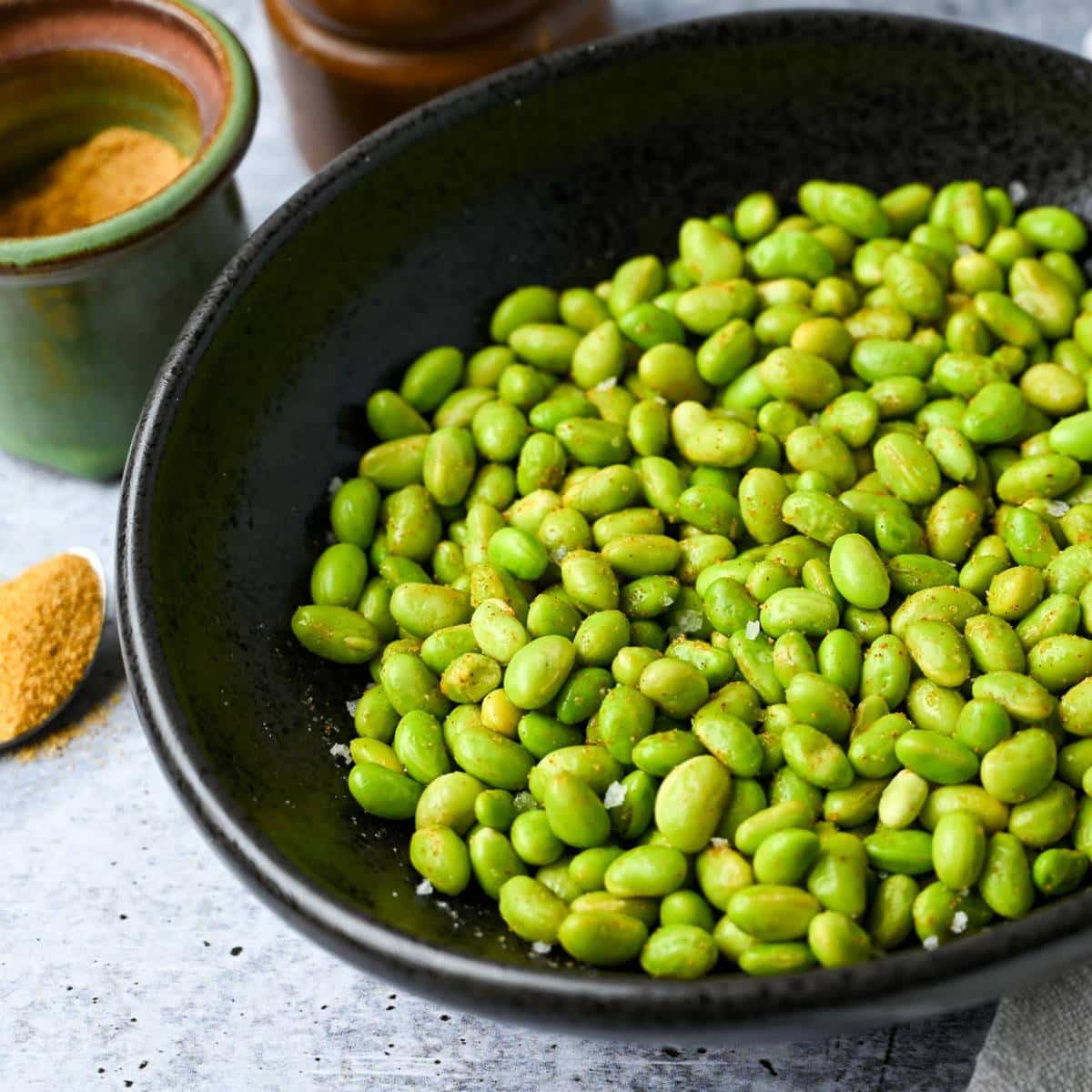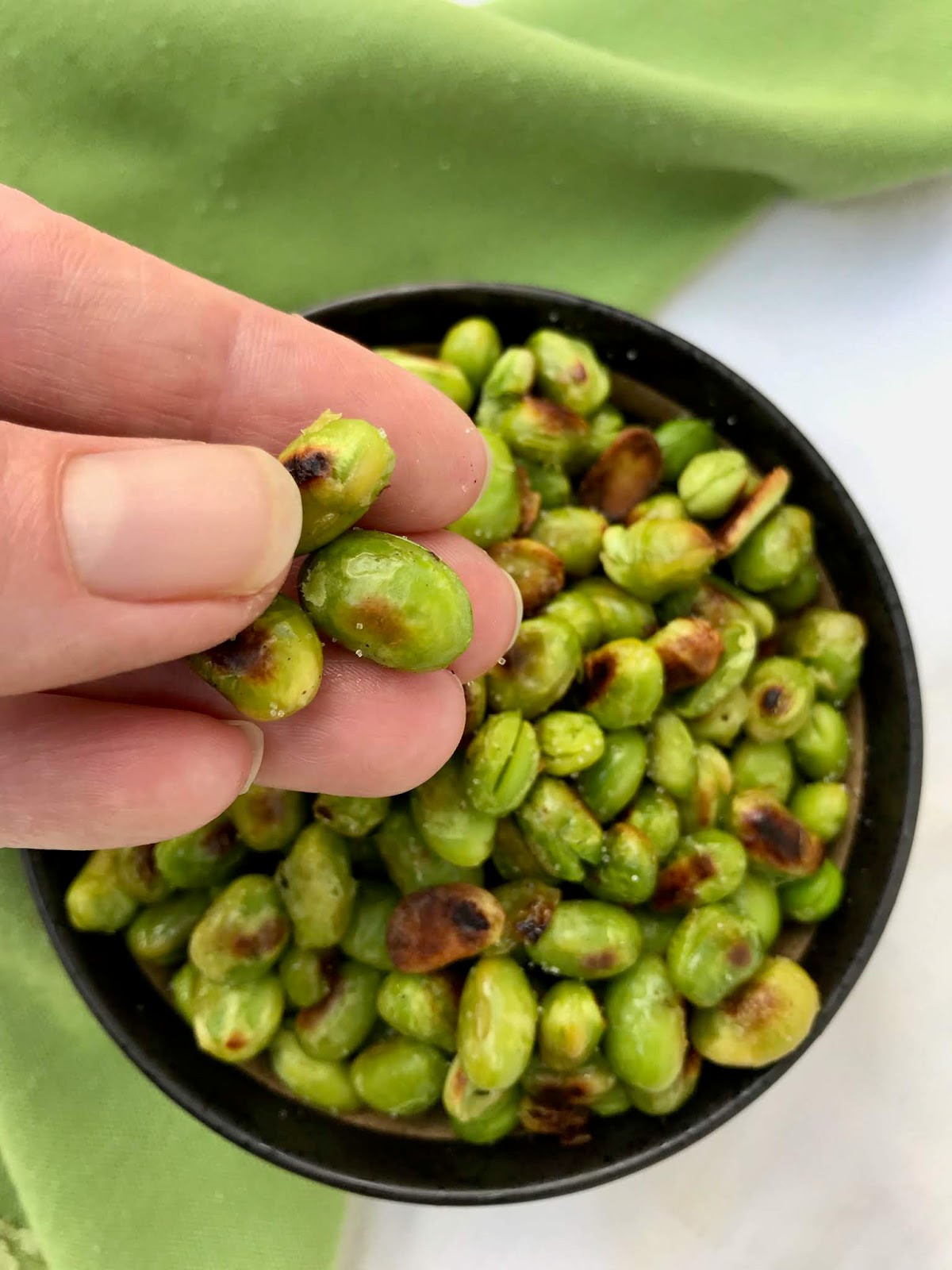Introduction

Many people are familiar with edamame as a popular appetizer at Japanese restaurants, but there’s another soybean snack on the scene: mukimame. These immature soybeans are picked before they fully ripen, giving them a vibrant green color, sweeter taste, and mild buttery flavor. While edamame has long been enjoyed in Asian countries, both edamame and mukimame are now gaining popularity worldwide. In this article, we’ll explore the differences between the two snacks and delve into their health benefits, taste, and cooking possibilities. Whether you’re a fan of edamame or curious about trying something new, this soybean snack showdown is sure to pique your interest.
Overview Of Edamame And Mukimame
Edamame and mukimame are both soybean snacks that offer a nutritious and flavorful alternative to traditional snacks. Edamame is a classic Japanese dish made from immature soybeans, while mukimame is a lesser-known variety that has gained popularity for its vibrant green color and sweeter taste. Both snacks provide a good source of protein, fiber, and essential nutrients, making them a great addition to a balanced diet. Whether you’re a fan of the familiar edamame or looking to try something new with mukimame, these soybean snacks are sure to satisfy your taste buds and provide a healthy snack option.
Health Benefits Of Soybean Snacks
Soybean snacks, such as edamame and mukimame, offer numerous health benefits. They are rich in protein, making them a great option for vegetarians and vegans. Protein is essential for muscle growth, repair, and overall body function. Additionally, soybeans are a good source of fiber, which aids in digestion and helps maintain a healthy weight. These snacks are also packed with essential nutrients like vitamins and minerals, including folate, magnesium, and manganese. Furthermore, research suggests that consuming soybeans may help reduce the risk of heart disease and improve bone health. With their nutritional profile, soybean snacks are a healthy and delicious addition to any diet.
Edamame: Traditional Soybean Snack

Edamame is a traditional soybean snack that has been enjoyed in Asian cultures for centuries. These young soybeans are harvested before they fully mature, giving them a vibrant green color and a unique taste. Edamame is typically boiled or steamed and lightly salted, making it a simple yet satisfying snack. It is often served as an appetizer or side dish in Japanese cuisine, but it can also be incorporated into salads, stir-fries, and soups. With its delicate texture and slightly sweet flavor, edamame offers a delightful and nutritious addition to any meal.
Edamame: Origin And Preparation Method
Edamame, a popular soybean snack, originated in East Asia, specifically in China and Japan. The word “edamame” translates to “beans on branches,” referring to the way the soybeans are harvested and served. Traditionally, edamame is prepared by boiling or steaming the pods until they become tender. Then, the pods are lightly salted to enhance their flavor. The edamame pods are typically served whole, and diners can easily extract the soybeans by popping them out of the pods with their fingers or teeth. This simple preparation method allows the natural sweetness and fresh taste of the soybeans to shine through.
Nutritional Content Of Edamame
Edamame is not only a delicious snack, but it also packs a nutritional punch. These young soybeans are rich in protein, fiber, and various vitamins and minerals. In fact, they contain all nine essential amino acids, making them a complete source of plant-based protein. Additionally, edamame is a good source of folate, iron, and vitamin K. It is also relatively low in calories and carbohydrates, making it a healthy option for those watching their weight or managing their blood sugar levels. Incorporating edamame into your diet can contribute to overall health and well-being.
Mukimame: Shelled Soybean Alternative

Mukimame, also known as shelled soybeans, is a popular alternative to edamame. These beans are harvested when they are fully matured and then shelled, creating a convenient and tasty snack option. Like edamame, mukimame is packed with nutrients, including protein, fiber, and vitamins and minerals. It is also low in carbohydrates, making it a great choice for those following a low-carb or ketogenic diet. Additionally, mukimame has a slightly nuttier flavor compared to edamame, adding a unique twist to your snacking experience. Incorporating mukimame into your diet can be a delicious and nutritious choice.
Mukimame: Differences From Edamame
Mukimame and edamame are both soybean snacks, but they have a few key differences. Firstly, mukimame is shelled soybeans, meaning the outer pod is removed, while edamame is typically served in the pod. This makes mukimame more convenient and easier to eat. Secondly, mukimame has a slightly nuttier flavor compared to the mild sweetness of edamame. Additionally, mukimame is harvested when the soybeans are fully matured, providing a different texture compared to the younger, tender beans of edamame. Despite these differences, both options offer a delicious and nutritious snacking experience.
Benefits Of Choosing Mukimame As A Snack
Mukimame offers a multitude of benefits as a snack option. Firstly, because the outer pods are removed, it is easier to snack on without any messy peeling. This makes it a convenient and hassle-free choice. Additionally, mukimame is packed with nutrients like protein, fiber, and various vitamins and minerals. It is also low in fat and cholesterol, making it a healthier alternative to many other snacks. Plus, the slightly nuttier flavor adds a unique and delicious twist to your snacking experience. Overall, choosing mukimame as a snack is a smart choice for those looking for a nutritious and tasty option.
Taste And Texture Comparison

When comparing the taste and texture of edamame and mukimame, there are some noticeable differences. Edamame has a slightly sweeter and grassier taste compared to mukimame. It also has a firmer texture and a more pronounced crunch when bitten into. On the other hand, mukimame has a creamier and slightly nutty flavor. It has a softer texture and is easier to bite into. Both varieties offer a satisfying and enjoyable snacking experience, but the difference in taste and texture allows for a unique and diverse culinary experience.
Flavor Profile Of Edamame Vs. Mukimame
Edamame and mukimame each have their own distinct flavor profiles that set them apart. Edamame is known for its slightly sweeter and grassier taste. It has a fresh and vibrant flavor that is often compared to young green peas. On the other hand, mukimame has a delicate and subtly sweet flavor with a hint of nuttiness. The creamy texture of mukimame enhances its flavor, making it a more indulgent snacking option. Both varieties offer unique and enjoyable taste experiences that can be enjoyed on their own or incorporated into various dishes.
Texture Differences In Soybean Snacks
Texture plays a crucial role in the overall experience of eating soybean snacks. Edamame has a firm and slightly chewy texture, similar to that of a green bean. Its texture adds a satisfying crunch to salads, stir-fries, and other dishes. On the other hand, mukimame has a creamier and softer texture. The outer skin of mukimame is removed, which allows for a smoother mouthfeel. This velvety texture enhances the indulgence and enjoyment of mukimame as a snack. Both varieties offer enjoyable textures that can be appreciated in different culinary applications.
Cooking And Serving Suggestions

When it comes to cooking and serving soybean snacks like edamame and mukimame, the options are limitless. Both snacks can be enjoyed on their own as a healthy and filling snack. For edamame, simply boil the pods in salted water and serve them with a sprinkle of sea salt. Mukimame, on the other hand, can be steamed or sautéed with a variety of seasonings like garlic, soy sauce, or chili flakes. These versatile snacks also make a great addition to salads, stir-fries, or even as a topping for rice bowls. Let your creativity guide you in exploring new and delicious ways to enjoy these nutritious soybean snacks.
Creative Ways To Enjoy Edamame And Mukimame
There are so many creative ways to enjoy the delicious flavors and textures of edamame and mukimame. One popular option is to incorporate them into salads, adding a nutritious twist to your greens. You can also toss them into stir-fries or noodle dishes for an extra protein boost. Another idea is to blend them into a creamy hummus or dip, perfect for snacking or spreading on sandwiches. For a fun twist, try adding edamame or mukimame to your homemade sushi rolls or grain bowls. The possibilities are endless when it comes to these versatile soybean snacks!
Recipe Ideas Incorporating Soybean Snacks
One fantastic way to enjoy the flavors of both edamame and mukimame is to incorporate them into delicious recipes. You can try adding them to your favorite stir-fry or noodle dish for an added protein boost and a bit of texture. Another option is to make a nutritious and creamy edamame hummus or dip, perfect for pairing with crackers or spreading on sandwiches. For those who love sushi, why not try filling your homemade rolls with edamame or mukimame for a unique twist? The possibilities are endless when it comes to incorporating these soybean snacks into your favorite recipes!
Conclusion

In conclusion, both edamame and mukimame are nutritious and delicious soybean snacks that offer numerous health benefits. While edamame is the traditional and widely recognized choice, mukimame provides a shelled alternative with a slightly different texture. Both snacks can be enjoyed in a variety of ways, whether steamed, boiled, or added to recipes. Ultimately, the choice between edamame and mukimame comes down to personal preference and dietary needs. So, grab a bowl of these soybean snacks and enjoy the tasty and nutritious goodness they have to offer!
Pros And Cons Of Edamame And Mukimame
Edamame and Mukimame both offer numerous health benefits, making them popular choices for a nutritious snack. Here are some pros and cons to consider:
Pros of Edamame:
– High in protein: Edamame is a great source of plant-based protein, making it an excellent choice for vegans and vegetarians.
– Rich in vitamins and minerals: Edamame is packed with essential nutrients like folate, vitamin K, and iron.
– Versatile: Edamame can be enjoyed in a variety of ways, from steamed or boiled as a snack to added to soups, salads, and stir-fries.
Cons of Edamame:
– Allergies: Some individuals may have soy allergies, making edamame unsuitable for them.
– Sodium content: Store-bought edamame snacks may be seasoned with high amounts of sodium, so it’s important to check the labels and opt for low-sodium options.
Pros of Mukimame:
– Convenience: Mukimame, or shelled edamame, saves time and effort in preparing the snack.
– Easy digestion: Removing the outer shell of the soybean can make it easier for some individuals to digest.
– Versatility: Like edamame, mukimame can be used in various recipes or enjoyed on its own.
Cons of Mukimame:
– Price: Mukimame may be more expensive than edamame, as the processing and packaging add to the cost.
– Availability: Mukimame may not be as readily available as edamame in some grocery stores, limiting options for purchase.
In conclusion, both edamame and mukimame have their pros and cons. Considering your dietary needs, taste preferences, and budget will help you decide which soybean snack is the best fit for you. Remember to enjoy these nutritious snacks in moderation as part of a well-balanced diet.
Final Thoughts On Choosing The Right Soybean Snack
When it comes to choosing between edamame and mukimame as your soybean snack of choice, it ultimately depends on your personal preferences and needs. Edamame offers a traditional, whole bean experience with its vibrant green color and slightly nutty flavor. On the other hand, mukimame provides convenience with its shelled form, making it easier to enjoy and incorporate into various dishes. Consider factors such as taste preference, texture, availability, and price when making your decision. Whichever option you choose, both edamame and mukimame offer a nutritious and delicious snack that can be enjoyed as part of a balanced diet.
FAQ About Edamame Vs Mukimame: Soybean Snack Showdown
Q: What is the main difference between edamame and mukimame?
A: The main difference between edamame and mukimame is the way they are processed. Edamame is harvested when the soybeans are still young and green, while mukimame is a copyrighted term for shelled edamame beans that have been parboiled.
Q: Which one is healthier, edamame or mukimame?
A: Both edamame and mukimame are healthy snacks as they are rich in protein, fiber, and various vitamins and minerals. However, edamame in its natural state may retain more of its original nutrients compared to mukimame, which has undergone processing.
Q: How do the taste and texture of edamame and mukimame differ?
A: Edamame tends to have a firmer texture with a slightly grassy and nutty flavor. Mukimame, on the other hand, might have a softer texture due to the parboiling process and can sometimes have a milder taste.
Q: Can edamame and mukimame be cooked in the same way?
A: Yes, both edamame and mukimame can be cooked in similar ways such as boiling, steaming, or microwaving. They can be seasoned with salt, soy sauce, or other spices based on personal preferences.
Q: Are there any specific culinary uses for edamame or mukimame?
A: Edamame and mukimame can be used in various dishes such as salads, stir-fries, soups, or even enjoyed as a simple snack. They can also be added to rice bowls, sushi, or noodle dishes to enhance flavor and nutritional value.

The Bird ‘n’ Bike Cafe ‘n’ Bar is a charming establishment nestled in the heart of Chiltern, Victoria, where locals and visitors alike come together to enjoy delicious food, great company, and a warm, welcoming atmosphere. With 1187 likes and 136 check-ins, it’s clear that the Bird ‘n’ Bike has captured the hearts of many. Our cafe and Bar is open from Wednesday to Sunday, inviting guests to start their day with us from 8 am to 2:30 pm. Whether you prefer to dine in and savor the cozy ambiance or grab a delicious meal, we’ve got you covered.